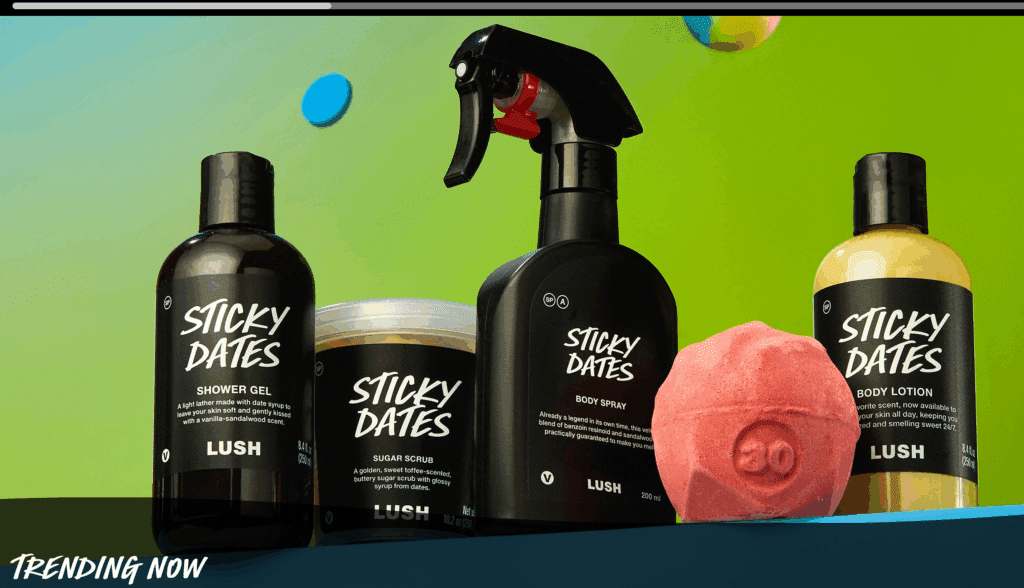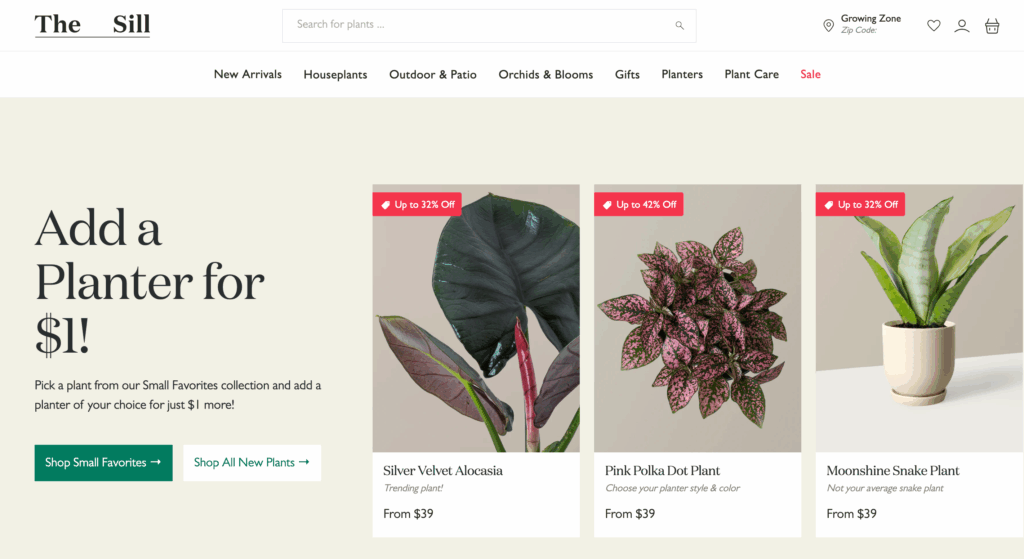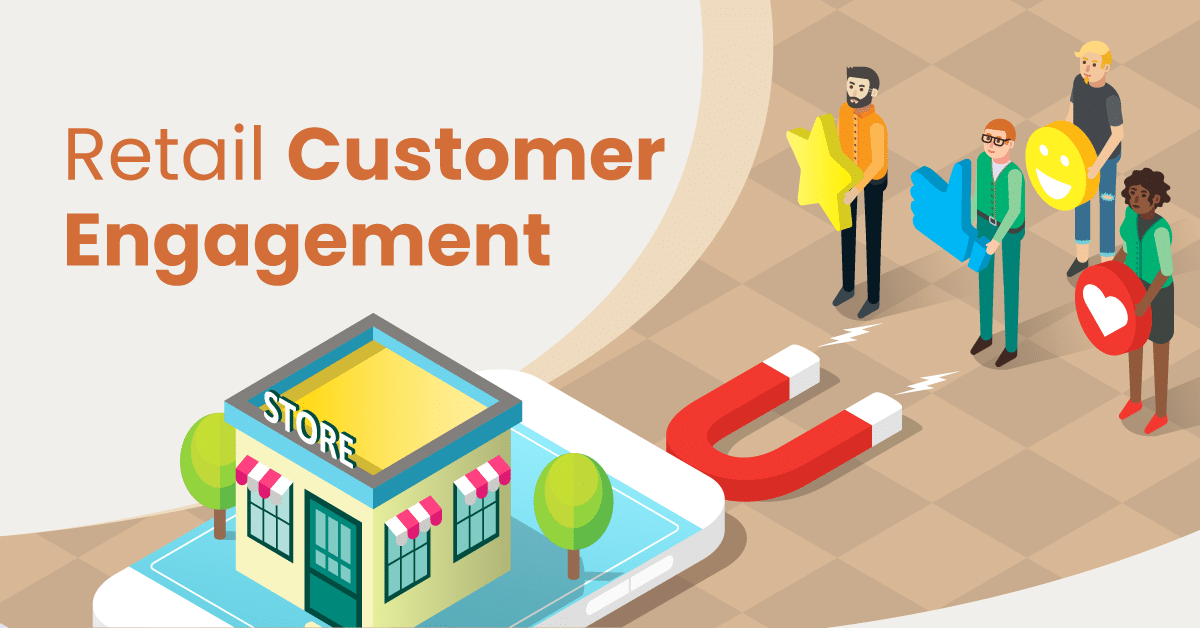Key Takeaways:
- Personalize Experiences: Use AI and data for tailored recommendations and promotions.
- Embrace Omnichannel: Ensure seamless support across email, social, in-store, and apps.
- Leverage AI Tools: Implement chatbots and predictive analytics for faster, more thoughtful engagement.
- Boost Loyalty Programs: Offer rewards and gamification to encourage repeat purchases.
- Build Communities: Foster customer connections through forums and shared experiences.
Retail customer engagement is a proven way to build lasting connections that turn one-time shoppers into loyal advocates.
Engaged customers are likelier to make frequent purchases and become loyal advocates of your store to their friends, family, and social media following. And the challenge of standing out in today’s crowded market can feel overwhelming.
In this blog post, we’ve curated practical strategies to boost engagement and foster lasting customer relationships.
You’ll discover actionable tips, real-world examples, and data-driven insights to transform how your retail business connects with customers. Let’s dive into the essentials of creating meaningful engagement that drives loyalty and growth.
What is Retail Customer Engagement?
Retail customer engagement means how you interact with your customers to build a relationship, keep them interested, and get them to buy again.
Here’s what that looks like in a small retail business:
- Greeting every customer when they walk in.
- Asking helpful questions to understand what they need.
- Following up after a sale (email, text, loyalty card).
- Using social media to stay connected and promote offers.
- Rewarding loyalty with points, discounts, or exclusive deals.
It’s not just about selling. It’s about making people feel welcome, remembered, and valued so they come back.

Free printable templates and checklists to help you manage retail operations with ease
Why Customer Engagement Matters in Retail?
Customer engagement is critical for small retail businesses. It builds loyalty, drives sales, and sets you apart from competitors. Here’s why it matters:
Repeat business and higher sales
Engaged customers tend to return and spend more. A loyal shopper from your store is like free revenue. For example, a fashion boutique that texts sale alerts to past customers or a convenience store that sends coupon emails can turn casual visitors into frequent buyers.
Lower marketing costs
It’s far cheaper to sell again to a happy customer than to find a new one. One analysis found merchants lose around $29 on average for each new customer they win (vs. only $9 a few years ago).
Focusing on engagement, such as sending special offers to your email list or rewarding loyalty, can save you big on expensive ads. For example, a local liquor shop might send a members-only discount to its regulars instead of splurging on generic ads, boosting profit on each sale.
Free word-of-mouth referrals
Happy, engaged customers become your best advertisers. When you give personal service or perks, customers tell others.
For instance, a vape shop that remembers a regular’s favorite e-juice or runs a “refer-a-friend” deal can win new loyal buyers through simple word-of-mouth.
Builds loyalty and trust
Great service keeps people returning; poor service drives them away. Small touches (like remembering a name, offering a free sample, or a quick refill) build trust.
Research shows that 60% of shoppers would stop buying if staff weren’t friendly, and 1 in 3 customers will leave after just one bad experience.
In practice, a liquor store hosting a free tasting night or a boutique offering personal styling advice makes customers feel valued, and those customers will choose your store again.
Stand out from the competition
Personal engagement is your edge in a crowded market with big online and chain retailers. A small shop can do things big chains can’t – like a convenience store owner knowing every regular by name or a fashion shop hostess offering style tips.
Satisfied customers help your business grow: Companies that top customer satisfaction rankings grow revenue about 2.5× times faster than the average. In short, engaged customers remember and prefer your store over faceless competition.
Use digital channels wisely
Online engagement keeps you on customers’ minds and drives store visits. Simple tools like a Facebook page, Instagram posts, emails, or text messages remind people you’re there.
For example, a fashion store posting a new dress online or a gas station tweeting today’s coffee special will remind followers to stop by.
Consistent online interaction (photos of new products, quick replies to messages, emailed coupons) can turn followers into foot traffic and sales.
7 Best Retail Customer Engagement Strategies
Engaging customers in retail is critical to building loyalty, increasing sales, and standing out in a competitive market. Below is a comprehensive list of the best retail customer engagement strategies, each elaborated with actionable insights to help retailers foster meaningful connections with their customers.
1. Create a Welcoming and Engaging Retail Environment
One of the foundational principles of engaging customers in retail is creating an inviting atmosphere. Shoppers should feel welcomed and comfortable the moment they step inside.
Store Layout and Visual Appeal
Design your store layout with a customer-centric approach. Ensure it’s easy to navigate, with well-organized sections and eye-catching displays. Maintain a clean and clutter-free space. An organized store reflects professionalism and care.
Provide ample seating areas where shoppers can take a break, try products, or relax while making decisions. Pay attention to the ambiance by using the proper lighting, colors, and decor to evoke the desired mood and brand personality. Use scents, music, and interactive floor displays to engage multiple senses.
Staff Training
Training retail staff is crucial for improving user experience and retail customer engagement. Well-trained employees provide better product knowledge, helping customers make informed decisions and fostering trust.
Effective communication and problem-solving enable staff to handle customer inquiries and issues professionally and empathetically. Consistently positive interactions between trained retail staff and customers create a lasting impression and encourage repeat business.
Retail Customer Engagement With Experiential Retail
The “experiential economy” concept has become increasingly influential as more customers shop online. Try adapting to this trend by hosting interactive workshops and experiences to engage with your customers.
Organize classes or wine tastings related to your products, allowing customers to learn while shopping. Events like DJ nights or book signings will imprint unique, lasting memories and positive associations with your shop.

2. Personalize the Shopping Experience
In the age of personalization, customers expect tailored experiences that cater to their unique preferences and needs. Here’s how to deliver:
Know Your Customers
Modern POS systems and CRM software allow retailers to gather data about customer preferences and buying behaviors. Use this information to offer personalized recommendations and promotions. One way of doing this is by using customer purchase history to suggest complementary products or notify clientele of relevant sales.
For example, if you know that a customer enjoys bold red wines from California, you can steer them in the right direction each time they visit your store. Try offering an obvious choice that they will be sure to enjoy. Then, suggest a different product related to their tastes, engaging them with a new grape or region.
Loyalty Programs
Loyalty programs play a crucial role in personalizing shopping experiences for retailers by allowing them to gather valuable customer data and insights. Retailers can track individual customer preferences, purchase histories, and behavior patterns.
With this information, stores can tailor product recommendations, promotional offers, and communications to meet each customer’s needs and desires.
This level of personalization enhances customer satisfaction and fosters long-term loyalty. In one survey, over 80% of global retail shoppers said they were influenced to buy repeatedly from a brand because they belonged to their loyalty program. Ultimately, customers feel valued and understood by the retailer, driving increased engagement and sales.
Feedback and Surveys
Actively seek customer feedback through surveys and online reviews, and use this information to improve. Feedback and surveys enhance retail customer engagement by actively seeking and valuing opinions, concerns, and suggestions.
By regularly collecting and analyzing this input, businesses can tailor their products, services, and communication strategies to better align with customer preferences and needs.
Openly acknowledging and acting upon feedback demonstrates a commitment to customer satisfaction, further boosting engagement and trust.
Customization Options
Provide product customization options, allowing customers to create items that suit their tastes. This can include customizing apparel with names or designs, creating bespoke jewelry, or allowing customers to choose their preferred color, size, and features for various products.
This unique and personalized shopping experience fosters a sense of ownership and emotional connection.
Thank You Cards and Gifts
Send thank-you cards or small gifts to loyal customers. These gestures strengthen the emotional connection between the customer and the brand, making the shopping experience more memorable and enjoyable.
By showing gratitude, retailers can encourage repeat business and positive word-of-mouth referrals, a cornerstone of referral marketing strategies.
3. Utilize The Right Technology
Technology is crucial in modern retail, and leveraging it smartly will significantly enhance customer engagement.
Mobile Apps
Develop a user-friendly mobile app that offers a seamless shopping experience, including personalized product recommendations and easy checkout.
These apps can leverage push notifications to share relevant promotions or updates, fostering ongoing interaction and customer retention.
Additionally, integrating features like in-app customer support or loyalty programs enhances engagement and ease of use.
Chatbots and AI
Implement AI-powered chatbots on your website and app to provide instant customer support and assistance. Only some questions need actual human customer support; chatbots are incredibly favorable, with 9 out of 10 customers reporting satisfaction in using them.
They help inform customers of FAQs without the need to pick up a phone or wait in a queue. Reducing that purchase flow friction is a win for your business and the client.
4. Perfect Your Omnichannel Retail
If you’re wondering how to improve customer engagement in retail, working on your retailing channels is a must.
Omnichannel retail enhances the customer experience by offering a seamless and interconnected shopping journey. Customers can transition effortlessly between online and offline channels, such as browsing products online and making in-store purchases.
Furthermore, omnichannel retail often provides personalized recommendations, easy access to customer support, and consistent branding.
eCommerce Integration
Online shopping is expected to grow 10% this year alone. Accordingly, an eCommerce platform integration with your retail point of sale and inventory management is crucial. This cohesion ensures smoother, more consistent shopping experiences and increases sales channels.
Purchase journeys, branding, and stock lists should be uniform across all channels. That includes social media retail, brick-and-mortar, and in-app purchases. Engage customers effectively no matter where you come into contact with them.
Click and Collect
Implement a click-and-collect service that allows customers to order online and pick up their purchases in-store. Customers enjoy the “buy online, pick up in-store” (BOPIS) experience because it offers the convenience of online shopping while allowing them to physically inspect or try on items before taking them home.
This option also saves time by avoiding shipping delays, making it an attractive choice for immediate needs. BOPIS also saves customers’ shipping costs, providing an added incentive for this retail practice, which highlights the benefits of applying technology in retail to enhance convenience and reduce expenses.
5. Enhance Brand Identity With Sustainability and Social Responsibility
Today’s customers often align with brands committed to sustainability and social responsibility. Be transparent about your sustainability efforts and ethical sourcing practices.

Eco-Friendly Practices
One study found that a company with harmful environmental practices would turn off 84% of customers. Eco-friendly practices make customers happy by aligning with their values and concerns about ecological sustainability.
When businesses are committed to reducing their ecological footprint through recycling, sustainable sourcing, or energy efficiency initiatives, customers often feel a stronger emotional connection to the brand.
Charitable Initiatives
Supporting social causes and local charities is good for everyone. Choose a cause or organization that aligns with your values and mission, and get involved.
Businesses can engage their customers by communicating their philanthropic activities, encouraging participation, and regularly reporting on the impact of their charitable initiatives. You can even try asking your customers what initiatives they care most about.
6. Community Building
Foster a sense of belonging by creating communities around shared values, interests, or causes. Host local events, support sustainability initiatives, or make online forums for customers to connect.
7. Engage With Customers Utilizing Digital Marketing
Digital platforms increasingly complement traditional brick-and-mortar stores, as consumers expect personalized experiences and seamless interactions. Digital marketing has emerged as a powerful tool for retailers to engage with customers, build brand loyalty, and drive sales.
Social Media Engagement
Social media platforms like Facebook, Instagram, and Twitter offer retailers a direct channel to connect with their audience. Retailers can create engaging content, run targeted ads, and respond to real-time customer queries. By crafting compelling stories and visually appealing posts, retailers will build a solid online presence that resonates with their customers.
Email Marketing
Email marketing remains a cornerstone of digital marketing strategies for retailers. Personalized email campaigns provide customers with product recommendations, exclusive offers, and updates on new arrivals.
Automated email sequences, such as abandoned cart reminders and post-purchase follow-ups, can help nurture customer relationships.
Content Marketing
Content is king in digital marketing. Retailers can establish themselves as industry experts by creating valuable content such as blog posts, videos, and infographics.
Providing helpful information engages customers and boosts a retailer’s authority and credibility within a niche.
User-Generated Content
Encouraging customers to create and share content related to a retailer’s products can boost engagement.
User-generated content, such as reviews, testimonials, and social media posts, provides authentic endorsements that resonate with potential buyers.

Beacons and Location-Based Marketing
Use beacon technology to send personalized offers and notifications to customers’ smartphones near your store. Install digital signage for dynamic, eye-catching displays you can easily update with promotions and information.
Google Local Inventory ads are another way retailers can show potential customers what products they have in stock.
Nearly every aspect of engaging with customers revolves around your point of sale. Smart, modern retail POS systems collect vital data, providing insights to power promotions, personalization, and more.
KORONA POS integrates with vertical-specific loyalty programs, connects with eCommerce platforms, and optimizes customer relationship management. We partner with an array of software applications that specialize in customer engagement.
Speak with a product specialist and learn how KORONA POS can power your business.
Real-Life Examples of Great Retail Engagement
Here are four real-life examples of great retail engagement, each with practical details and insights that small retailers or business owners can apply.
We’ve focused on specific, actionable strategies. Each example includes how the retailer engaged customers, why it worked, and how a small business could adapt it.
1. Bookshop Santa Cruz’s Community-Centric Events and Loyalty Program
Bookshop Santa Cruz, an independent bookstore in California, hosts hyper-local events like author readings, book clubs, and writing workshops, often tied to local culture or issues. They pair this with a loyalty program offering points for purchases, redeemable for discounts or exclusive event access. During the pandemic, they shifted to virtual events, maintaining engagement through Zoom book talks and curbside pickup promotions.
How Small Retailers Can Adapt:
- Host Niche Events: If you sell outdoor gear, organize a local hiking meetup or a gear maintenance workshop. Use free platforms like Eventbrite to manage RSVPs.
- Go Virtual: Use Zoom or Instagram Live for events to reach customers beyond your immediate area. Record sessions to reuse as content.
2. Lush’s Interactive In-Store Product Demos

Lush, a cosmetics retailer, trains staff to perform live product demonstrations in-store, such as mixing bath bombs or showcasing skincare routines.
Customers are invited to touch, smell, or try products. They also use chalkboards for daily specials and staff picks, creating a dynamic, personal feel. Their “Lush Labs” initiative lets customers vote on new products via the app, driving engagement.
How Small Retailers Can Adapt:
- Demo Products: If you sell artisanal food, offer free samples of a new jam or host a tasting event. For clothing, set up a styling station where staff show outfit pairings.
- Customer Input: Create a suggestion box (physical or via Google Forms) for new products or services. To boost responses, offer a small discount for participation.
- Cost Consideration: Demos require minimal investment—use existing inventory and train staff during slow hours. Track sales of demoed products to gauge impact.
3. The Sill’s Educational Content and Subscription Model

The Sill, a plant retailer, engages customers with free online workshops on plant care and in-store “Plant Parent” consultations. They also run a subscription service for monthly plant deliveries with care guides. Their blog and Instagram provide detailed tips, like “How to Repot a Monstera,” driving traffic to their e-commerce site. They use customer feedback to refine offerings, such as adding pet-friendly plants after demand surged.
How Small Retailers Can Adapt:
- Offer Expertise: If you sell coffee, host a free “Brewing Basics” class. For crafts, offer a DIY workshop. Use staff knowledge to create value without hiring experts.
- Content Marketing: Post short videos on TikTok or Instagram showing product use (e.g., how to clean leather goods). Use Canva (free tier) for visuals and schedule posts via Later ($16/month).
- Subscription Option: Test a low-commitment subscription, like a monthly “mystery item” box for $20.
How to Build a Customer Engagement Plan for Your Store?
Below is a straightforward, step-by-step guide tailored for small retail businesses. Each step is practical, easy to implement, and focused on driving loyalty and sales.
1. Know Your Customers
Before anything, understand who you’re serving.
- Gather data: Use POS systems to track purchases, popular products, and visit frequency.
- Segment them: Group customers into types — e.g., daily shoppers, weekend buyers, new visitors, loyal fans.
- Example: A liquor store notices high weekend foot traffic for wine buyers. That group gets special weekend promos.
2. Choose Your Channels
Decide how you’ll engage them—online, in-store, or both.
Example: A vape shop might use Instagram to post product drops and SMS to send weekly offers.
In-store: Great service, personalized greetings, product suggestions.
Online: SMS, email, Instagram, Facebook, loyalty apps.
3. Set Clear Goals
Don’t just engage for the sake of it. Define the outcomes you want.
- Boost repeat visits
- Increase average transaction size
- Get more product reviews
- Build an email/text list
- Example: A fashion boutique sets a goal to grow its email list by 100 people in 30 days through a raffle promo.
4. Offer Real Value
Engagement only works when customers get something they care about.
- Loyalty programs: Points, discounts, freebies.
- Personal offers: Birthday deals, favorite product alerts.
- Exclusive experiences: First dibs on new arrivals or tasting events.
- Example: A convenience store gives every 10th coffee free and runs a text club with flash discounts.
5. Automate Where You Can
Use simple tools to stay consistent without extra work.
- POS + CRM: Automatically track purchases and send follow-ups.
- Email/text tools: Schedule promos, reminders, win-back messages.
- Example: A liquor shop uses their POS system to email wine buyers every Thursday with weekend specials.
6. Get Feedback
Ask customers what they think—then use that info.
- In-store: Short chat at checkout
- Online: Quick surveys via email or Google Forms
- Incentivize it: Offer 10% off for a review or response
- Example: A smoke shop asks for reviews on new gear and uses the feedback to improve product selection.
7. Track and Tweak
Measure what’s working—and improve.
- Check open rates (email/SMS)
- Monitor repeat visit frequency
- Watch in-store traffic and sales after promos
- Example: A fashion shop notices more customers show up after SMS blasts than email, so they shift focus.
Use KORONA POS to Help Build Deeper Connections with Your Customers
Using KORONA POS helps retailers build deeper connections with their customers by offering tools that go beyond basic transactions.
The system’s built-in customer relationship management features allow businesses to collect and analyze valuable data such as purchase history, preferences, and shopping behavior. KORONA POS also supports a customizable loyalty program that encourages repeat business and creates a sense of belonging among shoppers.
Additionally, KORONA POS streamlines the checkout process with a user-friendly interface. Its cloud-based platform provides real-time sales and customer data, as well as omnichannel capabilities to offer seamless experiences across online and in-store environments.
Ready to deepen your customer relationships and boost engagement? Sign up for a free demo with KORONA POS today and see how smarter tools can drive meaningful retail success.












